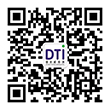Detailed steps of EU EN71 testing and certification process for AI children's to
Date:2025-06-19 09:46:58 Classification
:【question】 Visits:
In order to ensure the smooth progress of the EU EN71 test, it is recommended to prepare samples and related materials in advance, and choose a third-party testing agency with CMA/CNAS qualification certification for testing. The EU EN71 testing and certification process for AI children's toys can be divided into the following detailed steps:
1. Application preparation
- Fill in the application form: The applicant needs to fill in the application form and provide company information and product information.
- Submit materials: Submit the product's manual information, picture parameters, etc.
2. Determine the test standard
- Determine the test items: Determine the test standards and test items based on the product's manual information and picture parameters.
- Quotation: Quotation is made based on the determined test items.
3. Sign the contract
- Confirm the quotation: After the applicant confirms the quotation, sign a contract with the testing agency and pay the money.
4. Provide samples
- Sample quantity: Usually 3 samples are required for testing, and the specific quantity needs to be confirmed with the testing agency.
- Sample preparation: Ensure that the sample meets the test requirements, including material, color, size, weight, etc.
5. Perform tests
- Physical and mechanical performance tests: including drop tests, small parts tests, sharp edge tests, tension tests, pressure tests, seam tests, ear, nose and eye tension, torque tests, etc.
- Flame retardant performance tests: Test the flame retardant properties of toys to evaluate their fire safety performance.
- Chemical performance tests: Test the chemicals contained in toys, such as heavy metals, plasticizers, etc., to ensure that they meet EU environmental standards.
- Hazardous substance detection: Test the harmful substances that may be present in toys, such as formaldehyde, lead, etc., to ensure that they meet EU safety standards.
6. Prepare test reports
- Report preparation: The certification laboratory prepares test reports based on the test results.
- Report release: The test report is released to the product manufacturer, and the test results and improvement suggestions will be detailed in the report.
7. Improve products
- Improve according to the report: Make corresponding improvements to the product according to the suggestions in the test report to ensure that it meets EU safety standards and quality requirements.
8. Issue certificate
- CE certification: After the test is completed, a CE certification certificate will be issued to prove that the product complies with the EU EN71 standard.
Test items
EN71 standard includes several parts, the specific test items are as follows:
- EN71-1: Safety of toys - Part 1: Physical and mechanical properties
- EN71-2: Safety of toys - Part 2: Flame retardant properties
- EN71-3: Safety of toys - Part 3: Migration of certain elements
- EN71-4: Safety of toys - Part 4: Test devices for chemical and related activities
- EN71-5: Safety of toys - Part 5: Chemical toys (except test devices)
- EN71-6: Safety of toys - Part 6: Graphic representation of age signs
- EN71-7: Requirements for finger paints
- EN71-8: Swinging, sliding and similar toys for indoor and outdoor household use
- EN71-9: General requirements for organic compounds in toys
Precautions
- Data preparation: Ensure that the submitted data is complete, including product instructions, pictures, parameters, etc.
- Sample preparation: Ensure that the samples meet the test requirements and are sufficient in quantity.
- Choose a certification body: Choose a third-party testing agency with CMA/CNAS certification for testing.
Through the above steps, you can ensure that AI children's toys comply with the EU EN71 standard and successfully enter the EU market.




 Shen Gongwang Security: 44030602006947
Shen Gongwang Security: 44030602006947